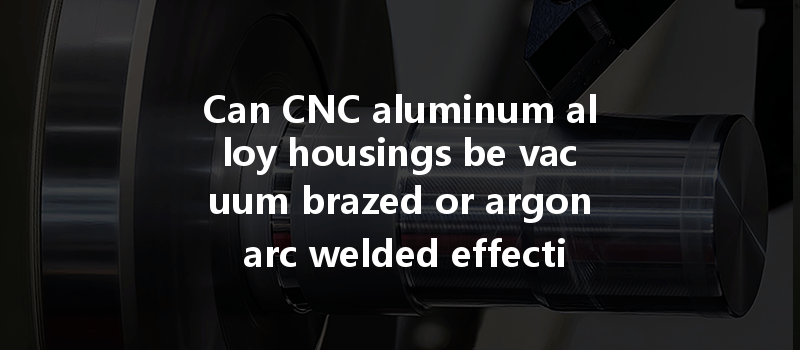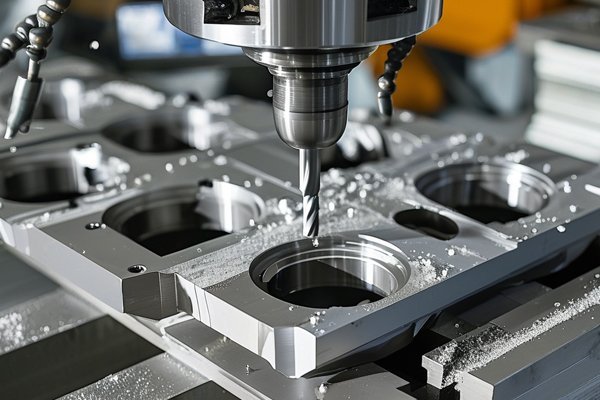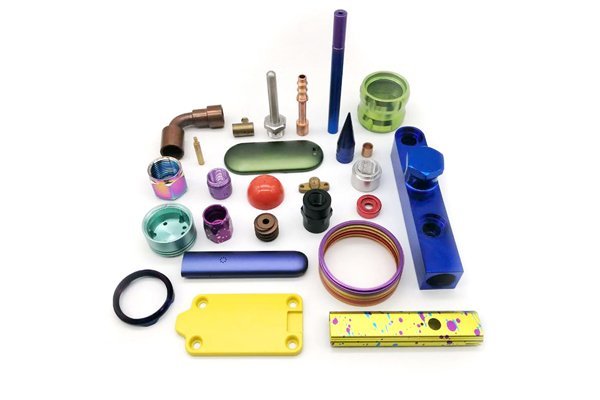Did you know that aluminum is among the most widely used metals in the automotive and aerospace industries? According to the Aluminum Association, about 92% of aluminum produced is still in use today. With its lightweight nature and superior strength, aluminum is an exceptional choice for components like housings. However, the effectiveness of joining methods, such as vacuum brazing and argon arc welding, often defines the success of these aluminum components. But can CNC aluminum alloy housings actually be effectively vacuum brazed or argon arc welded? This blog will delve into the techniques, comparisons, and best practices for both methods, equipping manufacturers with actionable insights for flawless production.
Understanding CNC Aluminum Alloy Housings
Before delving into the joining methods, it’s essential to understand what CNC aluminum alloy housings are. CNC, or Computer Numerical Control, is a manufacturing process where pre-programmed software controls the movement of factory tools and machinery. The technique is particularly effective for creating intricate designs and precise geometries, making it advantageous for aluminum alloy housings.
The Applications of CNC Aluminum Alloy Housings
CNC aluminum alloy housings find applications across several industries:
Properties of Aluminum Alloys Relevant to Joining Techniques
Aluminum alloys, such as 6061 and 7075, exhibit unique attributes like good corrosion resistance, thermal conductivity, and formability. However, their behavior during welding and brazing processes can vary significantly depending on their chemical composition, specifically the presence of elements like silicon and magnesium.
Vacuum Brazing: An Overview
What is Vacuum Brazing?
Vacuum brazing is a joining process where two or more materials, usually metals, are bonded using a filler material in a vacuum environment. This method eliminates contaminants, preventing oxidation and other reactions that would interfere with the joint quality.
Advantages of Vacuum Brazing
Disadvantages of Vacuum Brazing
Process Steps in Vacuum Brazing
Argon Arc Welding: An Overview
What is Argon Arc Welding?
Argon arc welding, also known as TIG (Tungsten Inert Gas) welding, is an electric arc welding process that uses a non-consumable tungsten electrode and a shielding gas—typically argon—to join metals.
Advantages of Argon Arc Welding
Disadvantages of Argon Arc Welding
Process Steps in Argon Arc Welding

Comparing Vacuum Brazing and Argon Arc Welding
Vacuum Brazing:
Argon Arc Welding:
Vacuum Brazing:
Argon Arc Welding:
on Joining Techniques
Both vacuum brazing and argon arc welding offer distinct advantages and disadvantages depending on the specific application and manufacturing conditions. Understanding these differences can help manufacturers make informed decisions about which method to employ for CNC aluminum alloy housings.
Best Practices for Effective Joining
Choosing the right aluminum alloy is critical. Ensure that the alloy is compatible with the chosen joining technique.
Design joints to minimize stress concentrations and ensure uniform welding or brazing access.
Properly cleaning surfaces to remove contaminants is vital to achieving high-quality joints, particularly for vacuum brazing.
Investing in skilled labor is essential, especially for argon arc welding, to avoid issues like porosity and suboptimal bead shapes.
Implementing rigorous quality control measures, like non-destructive testing, can identify issues early on and prevent costly mistakes.
In the quest for efficient and effective manufacturing processes, understanding the capabilities and limitations of joining techniques like vacuum brazing and argon arc welding is crucial for CNC aluminum alloy housings. By assessing the application, material properties, and production environment, manufacturers can choose the best method for their requirements.
This blog has highlighted the core techniques, advantages, and best practices associated with both vacuum brazing and argon arc welding, emphasizing the importance of quality in manufacturing. As industries continue to innovate, these insights are vital for maintaining competitive advantages and operational efficiencies. As you ponder your production processes, remember—the method you choose for your CNC aluminum alloy housings can significantly impact structural integrity and performance in the long run.






